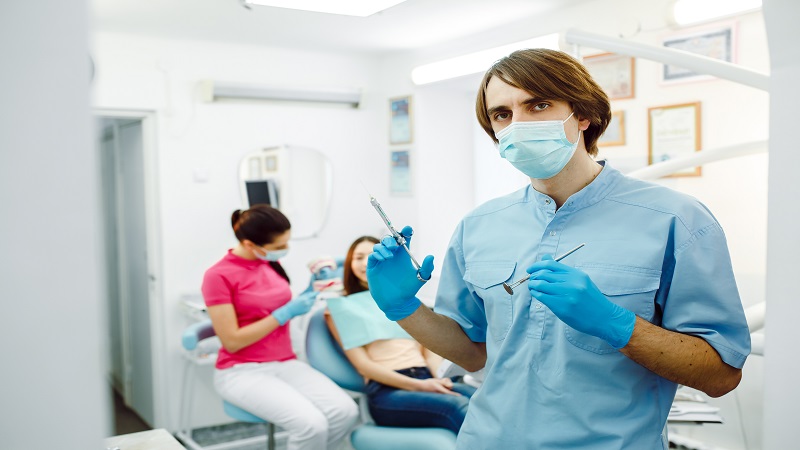In the intricate world of dental care, where precision meets the personal, maintaining an immaculate clinic is not just about aesthetics; it’s a fundamental aspect of patient safety and infection control. Dental clinics are temples of trust, where cleanliness transcends mere appearance to embody the very ethics of care practitioners pledge to uphold. This article delves into the meticulous methods dental clinics, such as http://www.temeculaoralsurgery.com/, employ to maintain cleanliness, safeguarding both practitioners and patients against potential health risks.
The Foundation: Understanding the Importance of Cleanliness
Cleanliness in dental clinics is the cornerstone of infection control, playing a pivotal role in preventing the transmission of pathogens. A clean clinic is a reflection of the professionalism and dedication of the dental team, significantly influencing patient confidence and comfort.
1. Beyond First Impressions
While a spotless reception can instill confidence and calm in patients, the essence of cleanliness in a dental clinic goes deeper, affecting every aspect of the clinical environment and procedures to ensure the highest standards of health and safety.
2. A Health and Safety Imperative
The stringent protocols for cleanliness and sterilization in dental clinics are governed by both ethical considerations and legal requirements, emphasizing their critical importance in healthcare provision.
Strategies for Sterility: Keeping the Clinic Clean
Dental clinics follow a comprehensive approach to cleanliness, employing a variety of strategies to ensure every surface, instrument, and piece of equipment is properly sanitized.
1. Regular and Rigorous Cleaning Routines
Daily cleaning routines are meticulously planned and executed, involving the disinfection of surfaces, chairs, and equipment. Special attention is given to high-touch areas such as door handles, reception desks, and waiting room furniture, using medical-grade disinfectants that kill a broad spectrum of pathogens.
2. Instrument Sterilization: The Core of Clinical Cleanliness
The sterilization of dental instruments is a non-negotiable aspect of clinic cleanliness. Autoclaves, which use pressurized steam to sterilize instruments, are the gold standard, ensuring that all bacteria, viruses, and spores are eradicated before instruments are used on another patient.
Innovations in Infection Control
As medical science advances, dental clinics continually adopt new technologies and methods to enhance cleanliness and infection control, ensuring patient and staff safety.
1. UV-C Light Sanitization
Some clinics now use UV-C light devices to sanitize rooms and equipment, offering an additional layer of protection. UV-C light has been proven to effectively destroy microbial DNA and prevent the spread of infectious diseases.
2. Antimicrobial Coatings
Emerging technologies include the development of antimicrobial coatings for frequently touched surfaces, such as door handles and light switches. These coatings release ions that are lethal to microbes, significantly reducing the risk of contamination.
Training and Education: The Human Factor
The effectiveness of any cleanliness protocol is heavily dependent on the individuals responsible for its implementation. Continuous training and strict adherence to procedures are paramount.
1. Ongoing Staff Training
Dental clinics invest in regular training sessions for all staff members, ensuring they are up-to-date with the latest guidelines and best practices in clinic hygiene and infection control.
2. Creating a Culture of Cleanliness
Fostering a culture of cleanliness within the clinic, according to the experts at dust and mop, encourages a collective responsibility towards maintaining high standards of hygiene, with every member of the team playing a vital role in infection prevention.
Fun Facts: A Lighter Bite on Dental Cleanliness
- The first recorded toothbrush dates back to 1498 in China, made from pig bristles. Today’s dental instruments and the methods used to clean them have come a long way since then.
- Dental clinics are among the most sanitized environments, rivaling even some operating rooms in terms of sterility standards.
- The use of cloves in dentistry for their antiseptic properties dates back over 2,000 years. Modern antiseptic solutions are a bit more advanced but are based on the same desire to prevent infection.
The relentless pursuit of cleanliness in dental clinics is a testament to the profession’s commitment to patient safety and quality care. Through a combination of rigorous protocols, continuous education, and the adoption of innovative technologies, dental practices ensure that every patient’s visit is not just about receiving exceptional care but also about entering a space where health and hygiene are paramount. This dedication to cleanliness is a core principle of dental practice, reflecting the profound respect for the trust patients place in their dental care providers.
